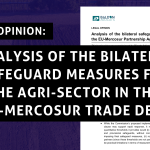Letter to ensure that the 2030 Effort Sharing Decision, the EU’s largest climate instrument, is fit for purpose.
A global climate deal was adopted last December in Paris, in which all countries agreed to take action on climate change. The Paris agreement is unique as it represents a historically significant milestone that aims to pursue efforts to limit global temperature rises to 1.5°C above pre-industrial levels. Before the summer you will present a revised Effort Sharing Decision (ESD), to tackle 60% of the EU’s greenhouse gas emissions by setting out annual emission targets for each Member State. We urge you to maintain the momentum created in Paris by ensuring that the 2030 Effort Sharing Decision results in effective climate action in the transport, buildings, agriculture, small industry and waste sectors. Such a signal from the EU will demonstrate to the rest of the world the strong political determination to translate the Paris Agreement into dynamic and meaningful action at home. To be coherent with the agreement made in Paris, the revised Effort Sharing Decision for the post-2020 period should include the following elements:
1. Increased ambition that is consistent with long-term objectives. The 2030 ESD must set Europe on a cost-effective path to reach the goals of the Paris Agreement and contain a long-term trajectory to reach at least 95% emission reductions by 2050 compared to 1990 levels. The EU must be fully committed to implement the Paris Agreement’s long-term objective to limit temperature increase to well below 2°C, and pursue efforts for limiting it to 1.5°C.
2. Include 5-yearly review and ratchet up mechanisms. The 2030 ESD should be aligned with the 5- year commitment cycles stipulated in the Paris Agreement and also include a ratchet-up mechanism. These two elements will allow upward reviews of the targets every 5 years, in line with future scientific assessments and technological potential, to avoid dangerous global warming and ensure the implementation of the relevant EU climate and energy instruments.
3. Governance must be adequate. The 2030 ESD should include annual reduction targets, annual compliance cycles and more effective corrective actions to avoid non-compliance. These elements are necessary to keep progress towards achieving the targets transparent.
4. Start in 2021 at actual emission levels. Most Member States are expected to significantly overachieve their 2020 ESD targets. Therefore, the 2030 ESD should allocate Member State allowances at the level of real emissions in each Member State at the start of the implementation period. In those few Member States who fail to reach their 2020 ESD target, that target should be their starting point for the post-2020 period, so as not to ‘bail-out’ their underachievement. Doing this will prevent the over-allocation of emission permits into the next period.
5. Closing the loopholes. Member States should not be allowed to use surplus allowances from the EU ETS to comply with their climate targets in the non-ETS sectors. The oversupply of EU ETS allowances needs to be addressed in the context of the ongoing reform of the EU carbon market. Transfer of ETS credits into the ESD would result in overall higher emission levels in the EU up to 2030, compromising the delivery of the 30 per cent ESD emissions reduction target.
6. Address carbon removals separately to ESD emissions, as part of a separate LULUCF pillar. Carbon removals from forests and land use should be promoted in addition to (and not replacing) emission reductions in the existing ESD sectors. Such removals must not be used to offset fossil fuel emissions in the other sectors. The reformed ESD should contribute to correct carbon accounting of bioenergy emissions and secure strict compliance with bioenergy sustainability criteria in order to guarantee real emissions savings
7. Put efficiency first and reinforce the synergies between European climate, energy and sectoral legislation. Various EU measures, including in the area of energy, support Member States’ ability to meet their climate targets and are crucial to achieving necessary emission reductions in the ESD sectors. They include 2025 CO2-targets for road vehicles, Energy Performance of Buildings Directive, the Energy Efficiency Directive, and the Circular Economy Package. These instruments should be reinforced to help Member States achieve their ESD targets and ensure the delivery of emission reductions in all sectors.
If implemented, these recommendations will help secure a real low-carbon transformation of our economy and will lead to more livable cities, cleaner air, reduced energy poverty and the creation of jobs. We call on you to take our recommendations into account when developing the proposal for the revised Effort Sharing Decision. To that effect, we would like to request a meeting in order to go into further detail on these issues.
Download Letter to Commissioners on ESD



